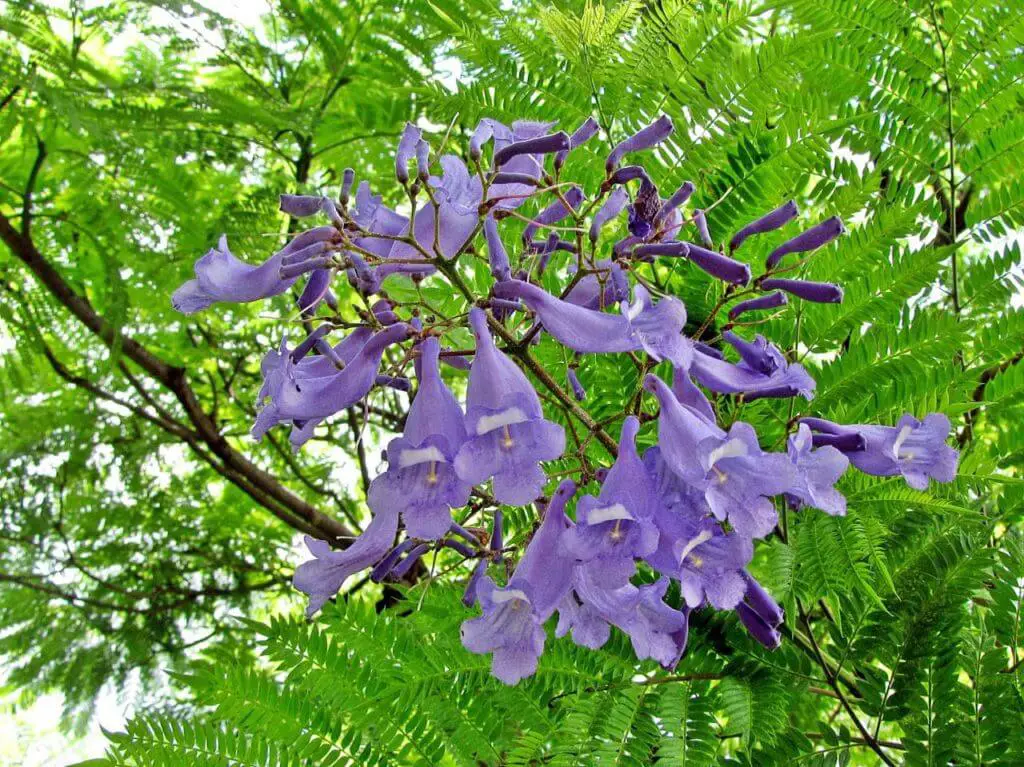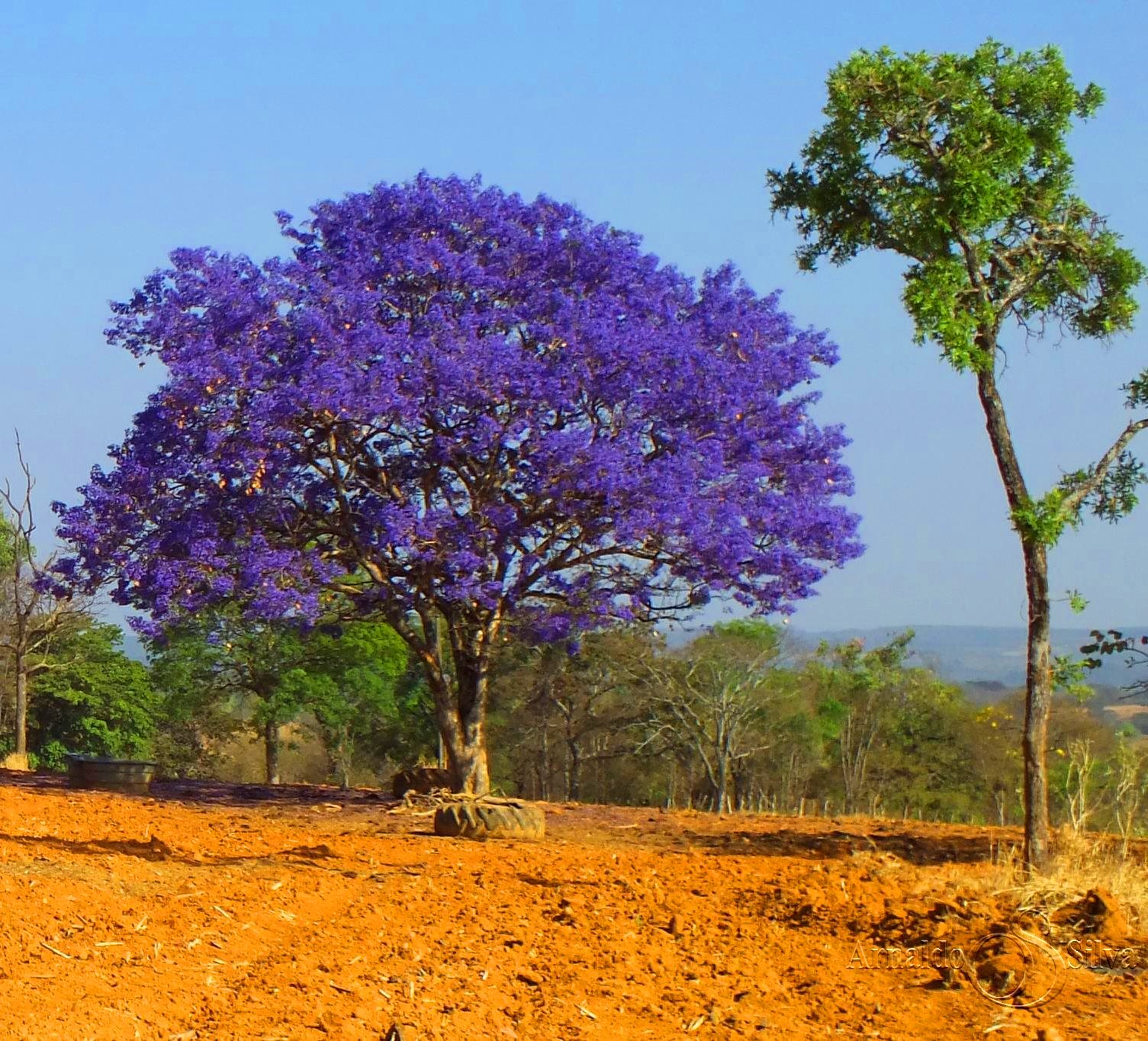
Viveiro Ciprest Plantas Nativas e Exóticas Jacarandá do Campo
Caviúna-do-cerrado: Portuguese: Provided by: [A].Brazilian Flora 2020 project - Projeto Flora do Brasil 2020; Jacarandá-do-campo: Portuguese: Provided by: [A].Brazilian Flora 2020 project - Projeto Flora do Brasil 2020; Jacarandá-do-cerrado: Portuguese: Provided by: [A].Brazilian Flora 2020 project - Projeto Flora do Brasil 2020

Jacarandá do Campo Sementes Caiçara
You can grow your own jacaranda easily from the seeds that are enclosed in the ornamental pod. Collect the seed as it comes ripe in October. Fill pots or trays with a quality seed-raising mix, lightly cover the seeds with the mix and make sure to keep moist. The seeds do germinate quite readily, though the resulting plants may be variable in.

Viveiro Ciprest Plantas Nativas e Exóticas Jacarandá do Campo
Goodna in Brisbane's Ipswich region is so famed for its purple petals it even has a community festival dedicated to jacarandas - and it's back in 2023 after a three-year hiatus!. Visit to celebrate with the locals on 28 - 29 October as sideshow alley, battle of the bands, food markets and dance competitions take over the country town, or head to Evan Margison Park anytime in spring to enjoy.

Viveiro Ciprest Plantas Nativas e Exóticas Jacarandá do Campo
caviúna-do-cerrado in language. caviúna-do-cerrado in Portuguese jacarandá-do-campo in language. jacarandá-do-campo in Portuguese jacarandá-do-cerrado in language. jacarandá-do-cerrado in Portuguese Bibliographic References. Brittonia,49 (1): 87-109,1997

Viveiro Ciprest Plantas Nativas e Exóticas Jacarandá do Campo
The jacaranda tree is a beautiful tropical tree that produces clusters of fragrant purple panicle-shaped blooms and arching branches that form a canopy shaped like an upturned umbrella. The jacaranda tree is fast-growing in a tropical environment, gaining about 10 feet a year in its first years of life. Its growth rate varies depending on where it's grown, slowing down to a moderate growth.

Jacarandá do Campo Sementes Caiçara
They briefly drop their leaves at the end of the dry season, then leaf up again when the rains come. In Australia however, Jacaranda foliage turns a lovely golden yellow colour in winter, and holds this colour for up to three months before bursting into bloom in late spring around November. These trees can reach a height of around 10-15m, and a.

Viveiro Ciprest Plantas Nativas e Exóticas Jacarandá do Campo
Jacaranda mimosifolia is known to attract some birds and insects such as the African honey bee and local and native honey-eaters. The species belongs to the family Bignoniaceae, and its members.

Viveiro Ciprest Plantas Nativas e Exóticas Jacarandá do Campo
Jacaranda season is beginning across Australia as an explosion of vivid purple spreads in a wave from north to south. We think of jacarandas as a signature tree of various Australian cities. Sydney, Melbourne, Adelaide and Perth all feature avenues of them. Grafton in New South Wales hosts an annual jacaranda festival.

Viveiro Ciprest Plantas Nativas e Exóticas Jacarandá do Campo
Grow Jacaranda in a conservatory or heated greenhouse over winter, in a well-lit position and with a minimum temperature of 5°C. From late spring to early autumn, Jacaranda can be moved outdoors to a sheltered spot in full sun. Do not grow Jacaranda in your home - it doesn't make a good house plant.

Viveiro Ciprest Plantas Nativas e Exóticas Jacarandá do Campo
To collect the seeds simply crack the seed pod open to remove the seeds. Soak the seeds. Once removed from the seed pod, soak the jacaranda tree seeds in water for 24 hours. Soaking seeds helps to speed up the germination process by softening the seed's protective outer coating. Plant the seeds in seed raising mix.

Viveiro Ciprest Plantas Nativas e Exóticas Jacarandá do Campo
Jacaranda is a genus of 49 species of flowering plants in the family Bignoniaceae, native to tropical and subtropical regions of the Americas [1] while cultivated around the world. The generic name is also used as the common name. The species Jacaranda mimosifolia has achieved a cosmopolitan distribution due to introductions, to the extent that.

Jacaranda mimosifolia Jacarandá, palisandro, tarco
Jacaranda mimosifolia is known to attract some birds and insects such as the African honey bee and local and native honey-eaters. The species belongs to the family Bignoniaceae, and its members.

Viveiro Ciprest Plantas Nativas e Exóticas Jacarandá do Campo
Scientifically known as Jacaranda mimosifolia, they're a hardy tree that thrives in well-draining soil and ample sunlight, making them perfect for Australian backyards. They require very little maintenance; pruning is only ever necessary if you're after a specific shape or if you want to encourage a more robust floral display the following year.

Viveiro Ciprest Plantas Nativas e Exóticas Jacarandá do Campo
Propagating Jacaranda Tree Using Stem Cuttings. Using pruning shears, sharpened scissors or a pruning saw, cut away a healthy branch that is at least 2cm in diameter. Take a cutting from the branch that has grown past the bark and that contains some healthy buds. Cut just above the point where the leaf grows from the stem.

Conheça o Jacarandá de Minas Conheça Minas
In Brazil it has several names: amendoim-do-campo, amendoim-bravo, jacarandá-branco, jacarandá-bana, jacarandá-do-campo, jacarandazinho, jacarandá-tã, faviero, secupiruna and uruvalheira. Several names are also used in Panama: carcuera, costilla, arbol soga, canalua, canaleto and tigre.

Jacarandá traz beleza e equilíbrio ao meio ambiente
The jacaranda tree (or jacaranda mimosifolia) has existed in Australia for over 150 years, but it is actually native to South America. A jacaranda tree is either semi-evergreen or deciduous, depending on the climate it grows in.. Do not plant near drains, water lines, swimming pools, and paths — the jacaranda tree root system is very.